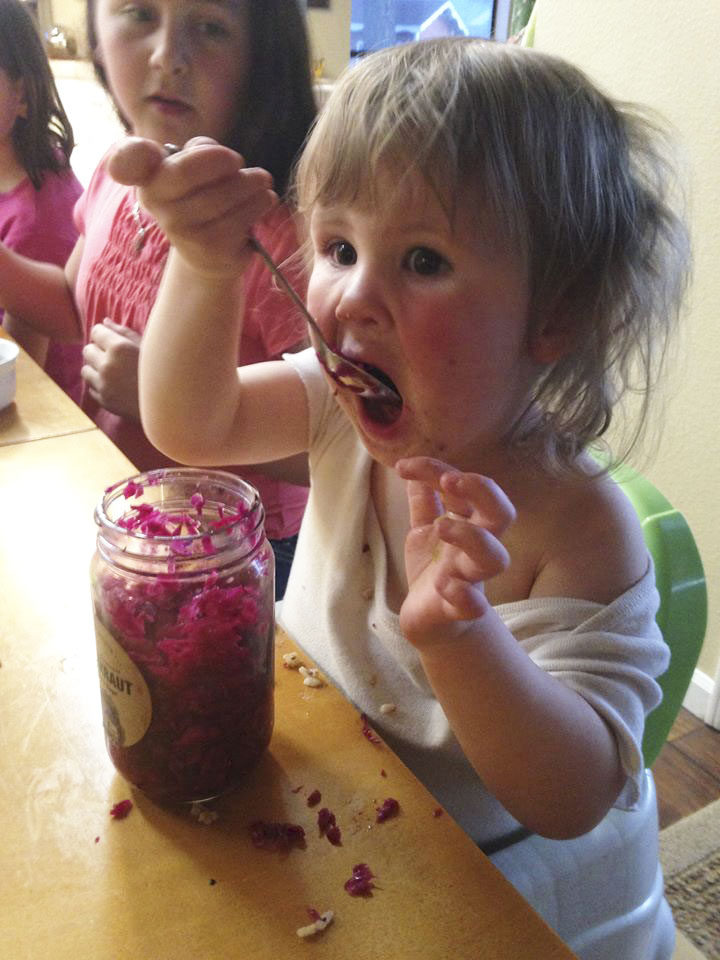
For Luella, age 2, fermented foods have been a big part of her diet. Her mom Shawna says these foods have helped Luella tremendously with food sensitivities and digestive issues she’s had to contend with. “All our kids love fermented foods; it’s actually a very child-friendly food, much more than you would think,” Shawna says.
You may wonder how our ancestors were able to preserve food without refrigerators, freezers, and modern canning techniques. Well, you could say that in addition to cellars, lacto-fermentation (lactic acid preservation) was their best friend.
Cultured and fermented foods have been a part of most diets for as long as we can tell. Whether fermented grains, vegetables, legumes, honey, fruit, meat or dairy products … some type of fermented food can be linked to almost every culture.
With the advent of the industrial revolution, large-scale food production brought new ways of processing and preserving long-loved foods. Unfortunately, some countries sacrificed the quality of healthful, living fermented foods for lifeless canned goods. One example is the shelf-stable sauerkraut offered at many markets, which is typically not the same life-sustaining food our ancestors thrived on.
Traditional fermented foods are more than just a condiment or side dish. Korea wouldn’t call a meal complete without their spicy pickled cabbage called kimchi, and Japan favors umeboshi (pickled plums), miso and more. More than just adding flavor, these meal additions add a plethora of beneficial bacteria that assist with proper digestion required for breaking down foods and absorbing nutrients.
Additionally, the process of fermentation is known to increase a food’s nutritional value. Fermenting cabbage, for example, increases its vitamin C and choline values from that of its raw or cooked forms.
The science behind fermented foods was recently studied by the 7th grade class of Dunsmuir Elementary School, where their science teacher, Mr. Adkisson, provided students with background knowledge of plant and animal cell structure, fermentation, and bacteria. Students further explored the subject by making their own traditional sauerkraut.
David Edmondson, owner of Salt and Savour in Dunsmuir, led the experiment. Mixed, mashed and smashed by 11- and 12-year-old hands, cabbage became “kraut” over the course of a week, and students were not disappointed with the end result!
There are a multiple ways you can make this all-time favorite pickled cabbage condiment too. The two most popular methods for making sauerkraut are using a European-style fermentation crock, or using pint, quart or ½ gallon glass canning jars.
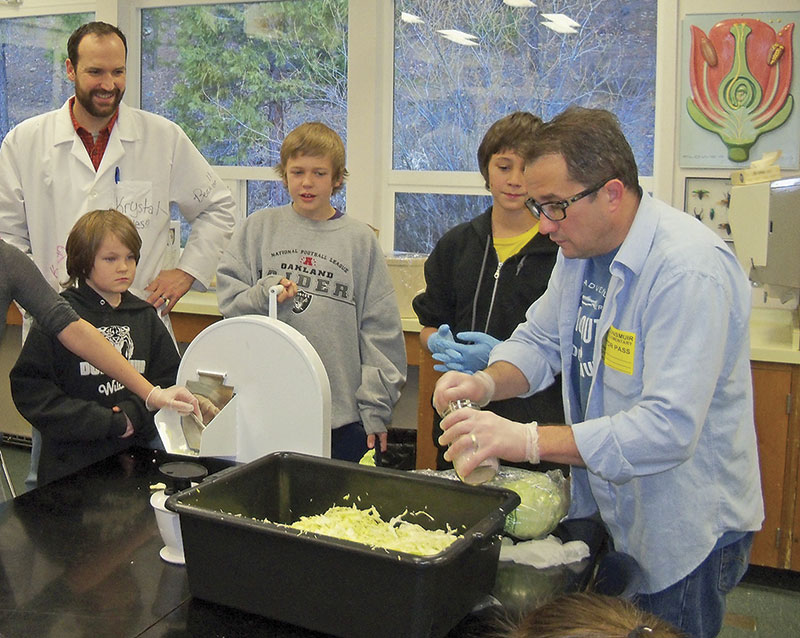
Dunsmuir Elementary School science teacher Spencer Adkisson and some of his students prepare to get hands-on with their sauerkraut-making project led by David Edmondson of Salt and Savour.
Edmondson uses 100-litre stainless steel tanks from Italy to produce his delicious sauerkraut products. Including this ever-giving food in his own diet has had a life-changing impact on his health, he says, and inspired him to create the business so others can benefit too. You can find Edmondson’s sauerkraut at summer farmers markets throughout the North State. You can also find it on the shelves of Thriftway Foods IGA Express in Dunsmuir, Wholesome Goods in Red Bluff, and Country Organics Marketplace in Redding. For updates visit facebook.com/saltandsavour.

Mount Shasta’s Maggie Shepard is passionate about food, gardening and creating pottery. Many of her ceramic pieces celebrate healthy foods and well-being, including recreations of historical pottery such as French butter keepers, “salt pigs” … and German sauerkraut crocks! Along with unique exterior details, the crocks feature a water moat, lid, and weighted plates that fit each design individually. Using the best clays and nontoxic glazes, Maggie definitely puts her heart into her art.
Mount Shasta’s Maggie Shepard is passionate about food, gardening and creating pottery. A potter for 35 years, many of her pieces celebrate healthy foods and well-being. Her intriguing recreations of historical pottery include French butter keepers, “salt pigs” … and beautiful traditional German sauerkraut crocks! Along with unique exterior details, the crocks feature a water moat, lid, and weighted plates that fit each design individually. Using only the best clay and nontoxic glazes, she definitely puts her heart into her art. To find out more, contact Maggie at (530) 859-1149 or mizmudpie@gmail.com.
Making sauerkraut with friends and family is a fun way to get everyone together to create great memories while carrying on a tradition that promotes health. There are multiple methods and recipes available; once you get the basics down you can experiment with adding different vegetables, spices, etc.
A must-have book for every kitchen is Nourishing Traditions by Sally Fallon. This simple sauerkraut recipe is adapted from the book; even those with little time can do it.
[sws_yellow_box box_size=”580″]Sauerkraut Recipe
Makes 1 quart
- 1 medium organic cabbage, cored and shredded
- 1 tablespoon caraway seeds
- 1 tablespoon sea salt (or Himalayan salt)
- Optional 4 tablespoons whey (for a casein/dairy free recipe, omit and use twice the sea salt)
In a large, unbreakable bowl, mix cabbage with caraway seeds, sea salt and whey. Pound the cabbage with a wooden pounder or meat hammer for about 10 minutes to release its juices. Place all in a quart-sized, wide-mouthed mason jar and press down firmly with the pounder until juices rise to the top of the cabbage mixture. The cabbage should remain under the liquid and liquid should be at least 1 inch below the top of the jar (fermentation will be active and create pressure). Cover tightly with lid and store at room temperature for about 3 days before transferring to cold storage. The sauerkraut may be eaten immediately, but improves with age.
[/sws_yellow_box]
Posted in: Localicious
Comment Policy: All viewpoints are welcome, but comments should remain relevant. Personal attacks, profanity, and aggressive behavior are not allowed. No spam, advertising, or promoting of products/services. Please, only use your real name and limit the amount of links submitted in your comment.
Comments
Leave a Reply
You Might Also Like...

Localicious: What’s In Your Lunch Box?
With the hubbub of the new school year and getting everyone back into the routine of early mornings, homework and afterschool activities, healthy lunches can make all the difference in […]
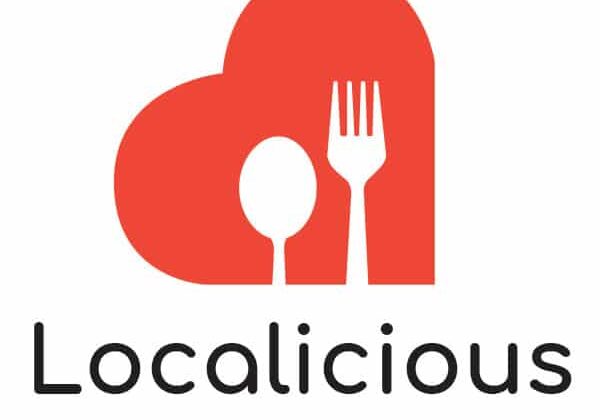
Localicious – Chocolate: The Way to a Woman’s Heart
Everyone knows that the way to a woman’s heart is chocolate, right? But did you know that chocolate is also a way to keep a woman’s heart (or anyone’s heart) […]

Farmers Market Fun for the Whole Family- Localicious
You can find farmers markets all over. From town greens to city parks, rest stops on highways to roadside stands; farmers are offering their wares. Farmers markets are a great […]
Localicious – The Extraordinary Birthday Party
A child’s birthday is a special time, a milestone filled with laughter, joy and fun. Whether celebrating with friends, family, or both, there is nothing better than seeing the excitement on […]


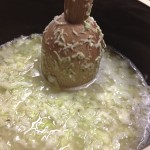
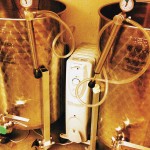
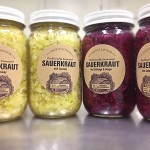
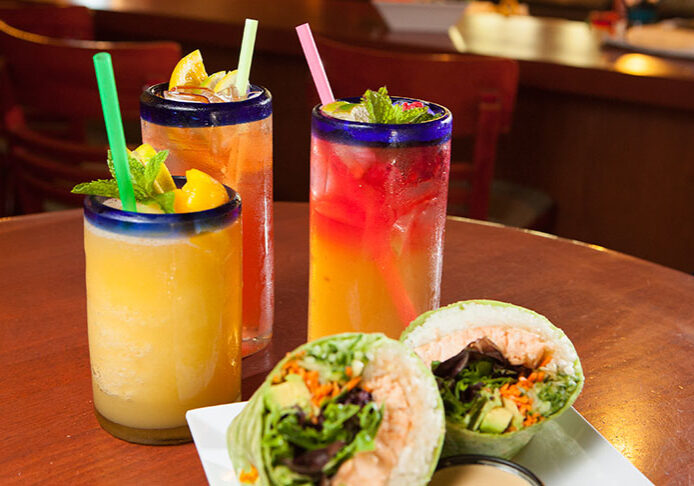
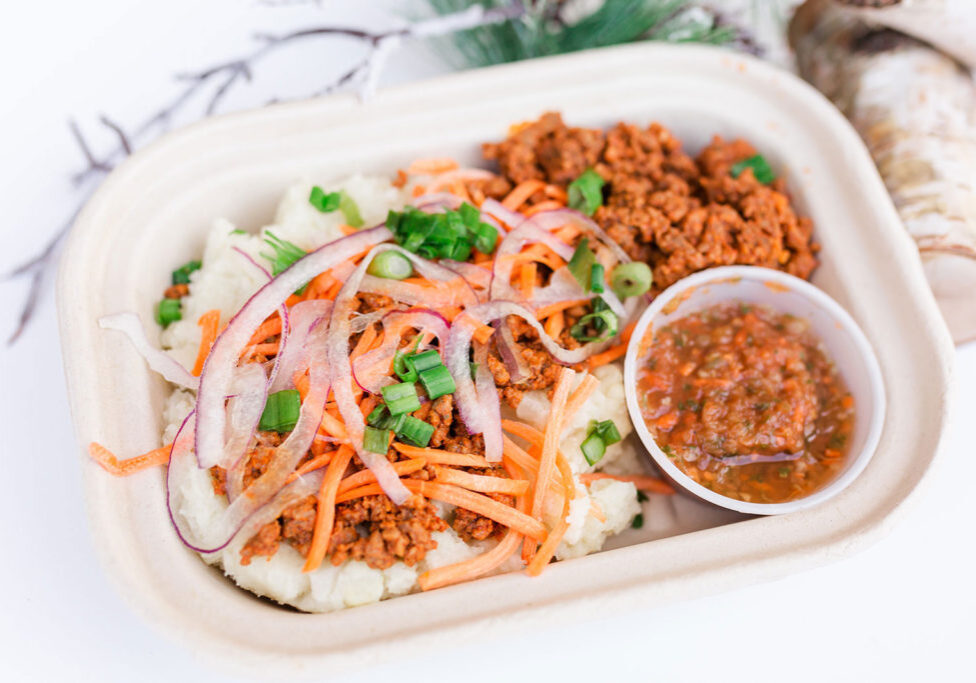
Maggie Shepard says
Thank you so much for a great article Hannah. It’s been great to see the resurgence in the ancient art of fermentation. For the record, my correct phone number is 530-859-1149.
Dave Edmondson says
I’d like to point out that making your own sauerkraut is a very dangerous process. Of course that would be false, and mentioned only due to my desire to have you buy Salt and Savour brand Sauerkraut. What a well-written article about my favorite topic, Hannah!
Hannah Kraemer says
Thank you two very much!!! I appreciate both of your help and input to make this piece complete! I am pretty sure your customers will keep loyal, Dave! I can only see your kraut biz growing!! 😉